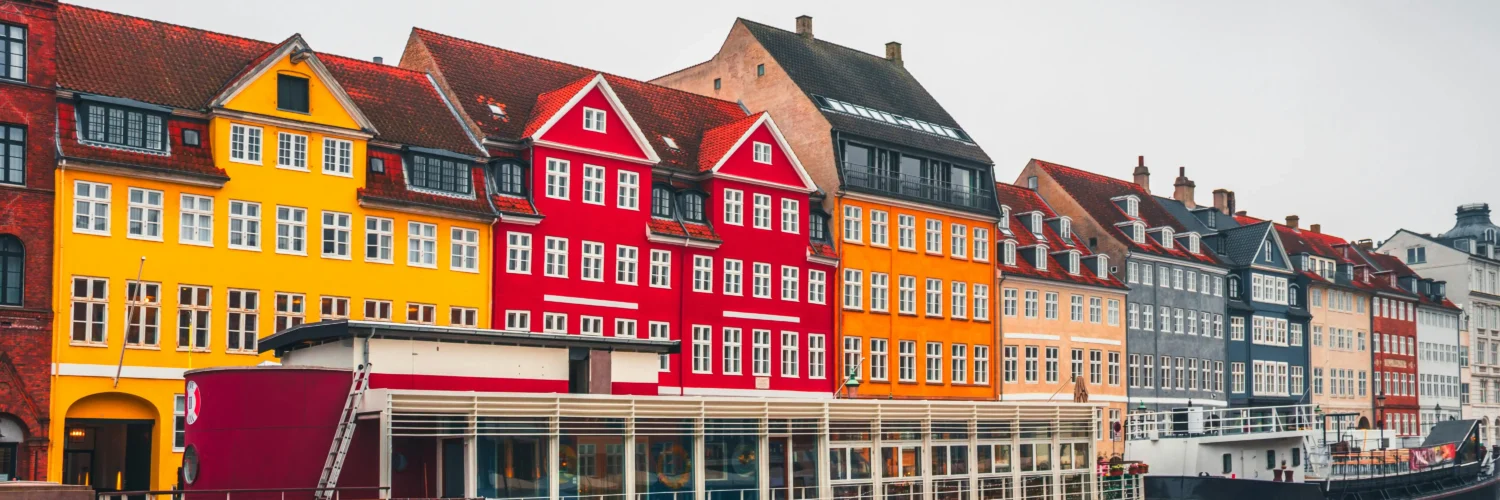Biking Culture and Eco-Transport
Bicycles are more than a mode of transportation in Copenhagen, they’re a symbol of the city’s identity. Over 60% of residents commute by bike daily, thanks to an infrastructure that prioritizes two-wheeled travel. Wide bike lanes, traffic signals for cyclists, and bike bridges like the Cykelslangen make cycling safe and efficient.
Visitors quickly notice the ease of getting around without a car. From airport arrivals to sightseeing excursions, the city’s public transport system integrates seamlessly with its bike-friendly ethos. Electric buses, metro lines, and harbor ferries provide low-impact options for everyone.
One of the most notable things to do in Copenhagen is to rent a bike and experience the city from a local’s perspective. Pedaling through neighborhoods like Vesterbro, Østerbro, and Nørrebro offers a deeper connection to the city’s rhythm and character.
Urban Planning with a Green Vision
Copenhagen’s sustainability vision extends to its urban design. The city aims to become carbon neutral by 2025, and that goal has sparked a wave of green innovation. New neighborhoods, such as Nordhavn and Carlsberg Byen, are being developed with eco-conscious architecture, energy-efficient buildings, and community-centered layouts.
Green roofs, rainwater collection systems, and urban gardens are increasingly common. Even older parts of the city are being retrofitted to reduce carbon footprints, such as replacing heating systems and upgrading insulation in historic buildings.
At the core of this strategy is the principle that a city must be livable for people first. Walkable spaces, community parks, and inclusive design create a welcoming atmosphere that encourages outdoor activity and social cohesion.
The Role of Renewable Energy
Wind power is central to Denmark’s energy strategy, and Copenhagen reflects this priority. Offshore wind farms near the coast supply a significant portion of the city’s electricity, while local initiatives promote solar panels and geothermal heating.
District heating systems, which provide energy-efficient warmth to most households, reduce waste and improve air quality. The Amager Bakke power plant, which doubles as a ski slope, is a striking example of how utility infrastructure can serve public enjoyment and education.
Copenhagen’s success lies in making sustainable living convenient and desirable. Residents are not forced to change—they are offered better, greener alternatives that enhance their daily lives. From eco-friendly waste management systems to incentives for electric vehicle adoption, the city integrates sustainable choices into the very fabric of daily routines. Public campaigns regularly inform citizens about energy conservation, while accessible infrastructure ensures that making environmentally responsible decisions is not only easy but often more appealing.
Local Engagement and Global Influence
The city’s green transformation is not top-down. It thrives because of citizen involvement. Community-driven projects, urban farming initiatives, and environmental education programs foster a strong culture of stewardship.
For example, Copenhageners regularly participate in city planning meetings, share resources through communal platforms, and embrace lifestyle changes such as zero-waste shopping and vegetarian diets. Cafes serve organic fare, shops sell upcycled goods, and second-hand markets thrive.
As a result, Copenhagen has become a benchmark for urban sustainability. Cities around the world look to its policies and practices for guidance. From Melbourne to Medellín, urban leaders are studying how Copenhagen balances growth, innovation, and climate action.
If you’re researching how to model sustainable change in urban settings, a visit to Copenhagen offers insights not just in infrastructure, but in behavior, culture, and mindset. A well-planned itinerary for 4 days could include meetings with local sustainability experts, tours of eco-friendly districts, and participation in community initiatives.
Green Tourism in Copenhagen
Travelers to Copenhagen don’t just observe sustainability they live it. Eco-conscious hotels, bike rentals, and low-impact tours are widely available. Many accommodations are Green Key certified, adhering to rigorous environmental standards.
The city’s culinary scene emphasizes local, seasonal ingredients. Dining at places like Gro Spiseri, located on a rooftop farm, or sampling organic treats at Torvehallerne, allows visitors to taste the values that define Copenhagen’s lifestyle.
Outdoor lovers can swim in clean harbor baths, paddleboard along the canals, or relax in biodiverse urban parks. For a more immersive experience, visitors can explore the green walking trails of Amager Fælled or take a picnic to the scenic King’s Garden. These spaces not only offer relaxation but also host seasonal events such as open-air concerts and eco-festivals. These experiences reflect the city’s successful integration of nature into everyday life, creating a lifestyle where recreation and environmental harmony go hand in hand.
A Blueprint for the Future
Copenhagen’s journey is far from complete, but its progress shows that meaningful change is possible. Its model proves that urban living and environmental responsibility can coexist and even thrive together.
As climate challenges intensify worldwide, the Copenhagen example becomes ever more relevant. It’s a city that dares to innovate, involves its people, and reimagines the purpose of urban space.
In exploring the many things to do in Copenhagen, from cycling tours to sustainable gastronomy, one discovers more than a travel destination. It’s a living laboratory where the future of cities is being written today. The city’s approach to environmental design, citizen involvement, and cultural preservation creates a layered experience that speaks to diverse interests. Whether you’re a tourist seeking inspiration or a policy maker studying progressive frameworks, Copenhagen invites you to experience a vision of urban life that’s as inspiring as it is essential and increasingly influential worldwide.
Expanding the Horizon: Education, Business, and Social Equity
Copenhagen’s green movement is also influencing its education system. Universities and schools integrate sustainability curricula, encouraging students to engage in real-world projects. Institutions like the University of Copenhagen and the Technical University of Denmark partner with city agencies to research sustainable technologies and urban models.
The business landscape mirrors this commitment. Startups and established firms in Copenhagen are focused on green tech, circular economy models, and sustainable product design. The city’s emphasis on social equity ensures these innovations benefit all residents, not just a select few.
Public policies support affordable housing, accessible public services, and inclusive mobility, ensuring Copenhagen remains a city for everyone. This approach is what truly makes it a leader in sustainable urbanism.
From policy frameworks to daily choices, Copenhagen illustrates what a city can become when environmental values are deeply embedded in its DNA.





Add comment